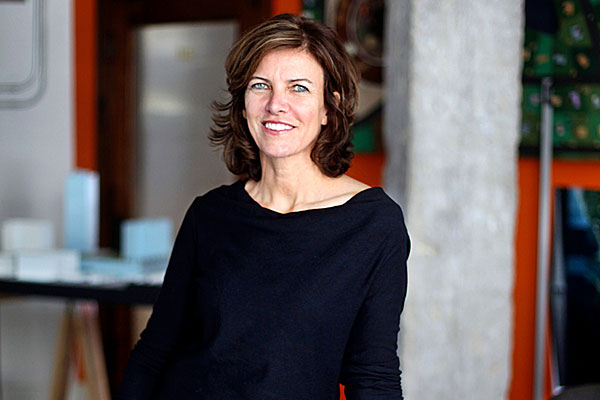
On January 17, I had the chance to watch the MacArthur “genius” Jeanne Gang flip through a PowerPoint of her recent and forthcoming urban design projects to a packed Fullerton Hall at the Art Institute. Gang, who founded Studio Gang in 1997, was such a draw that hordes of hopeful attendees were turned away and redirected to Building: Inside Studio Gang Architects, the large exhibition on Gang’s architectural firm (on view in the Modern Wing through February 24). If you haven’t yet had the chance to hear Gang speak, tomorrow the Art Institute hosts “Archi-Salon,” another event for Inside Studio Gang Architects; Gang will be one of three panelists discussing her practice and how research informs architecture.
Here, in five points gleaned from Gang’s earlier lecture, is how the celebrity architect is working to raise the public’s awareness of a healthy environment:
1. Is rope the building material of the future? Studio Gang designed the exhibition’s “rope rooms,” composed of thick rope pulled taut into semi-transparent latticed walls. As a material, rope is inexpensive, it creatively defines a space, and is lightweight. But it’s not as light as you’d think; structural engineers were needed to hang the rope, suspended from their armatures, from the gallery’s ceilings.
2. It’s more likely that bricks, made of new compounds, will be the true material of the future. Indeed, Gang’s team is attempting to innovate this very common building material. Their unbaked bricks are formed of compressed earth and rubber tire shavings, which may soon be the main structural component of a housing complex under construction in Hyderabad, India.
3. Gang’s inspiration for the new social justice college in Kalamazoo, Michigan, began with Gang looking at maps of self-organized protester dwellings, such as the Tahrir Square encampment from the recent Arab Spring. What may look like a chaotic crowd to some eyes turned out to be DIY urban planning.
4. The Northerly Island (née Meigs Field, “rendered obsolete” in 2006) wildlife and recreation project is a 91-acre peninsula that will boast beaches, wetlands, woodlands, and a prairie region. Best of all, the designers will plant a sunken ship novelty for scuba divers to explore.
5. Gang estimates that 2,000 wild coyotes live Chicago. She emphasized that they are part of our urban natural habitat. The coyotes only come out at night, and they feed on rats, not pets. The implied moral is that wildlife can live in harmony with us oh-so-civilized being.
Photograph: Sally Ryan Photography


